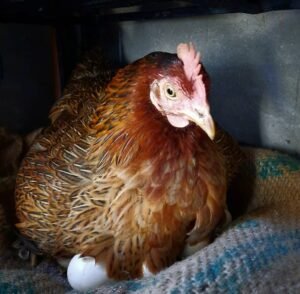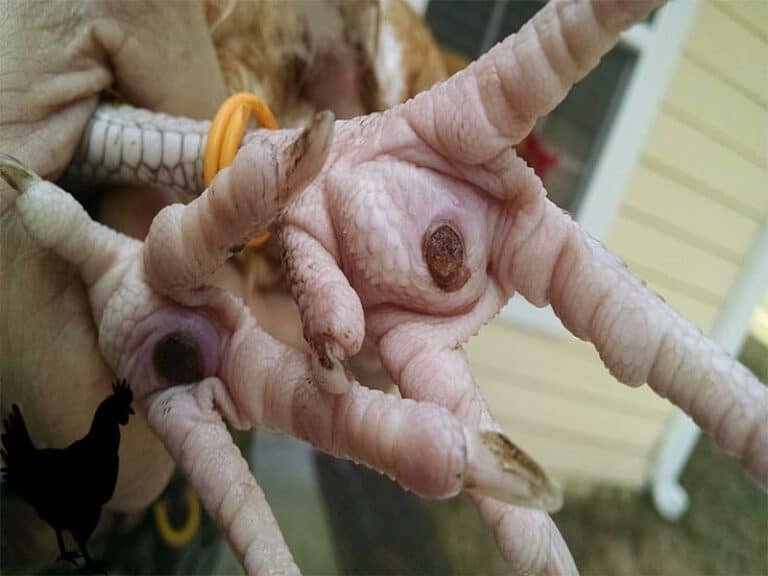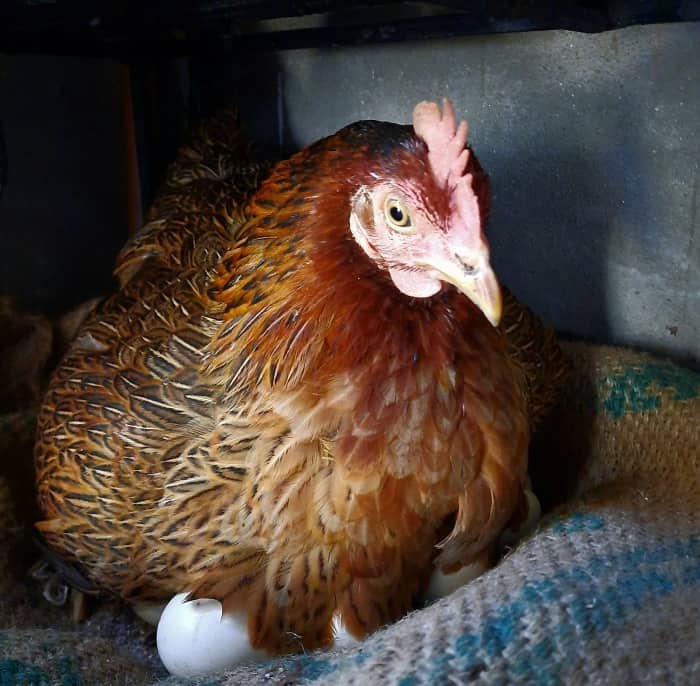Chicken Mites: 6 Easy Ways to Get Rid of Mites on Chickens

Chicken Mites can be a source of terrible discomfort to your chickens, hence the need to get rid of them. But, how do you get rid of mites on chickens?
If we can identify where mites come from and how they affect chickens, then we will know how to prevent them. And that is why this article exists.
In this guide, you will learn strategic tips on how to send those crawling discomforting parasites packing from your poultry farm. We will examine the different types of chicken mites or lice and the symptoms to identify an infected chicken. In addition, you will learn how to prevent them from returning to the farm.
If you are truly tired of dealing with these parasites, then you need to read this article till the end.
What are chicken mites?
Mites are tiny eight- or six-legged small acarid arachnids that often infest animals, plants, and stored foods. These pests affect the health and productivity of chickens.
With all the illnesses and chicken diseases that can affect your flock, a mites infestation can be one of the most difficult to get rid of. And sadly, selling off your infested birds to get a new batch does not solve the problem.
However, practicing good biosecurity and constantly checking your chickens before introducing them to your flock will go a long way to curb lice infestation.
What you should know about chicken mites?
Here are a few things you should know about chicken mites
- They’re parasites
- They live outside of the chicken.
- Mites feed on chicken blood.
- They’re light grey in color before they feed.
- However, when they feed and they’re full of blood, though, they turn red.
- Usually, mites feed at night when your flock has roosted.
- Once daylight comes they leave the “host” and hide in crevices and cracks, only to come out to feed again once darkness falls.
What are the various types of chicken mites?
Chicken mites come in various shades and sizes just like other evils. And sadly, getting rid of them will require different strategies. That is why you must know them.
Here are a few of the most common chicken mites that can affect your flock;
1. Northern Fowl Mites:
This is the most common type of chicken mite. Also, they are usually very difficult to detect.
However, to decipher if the Northern fowl mites cause the mite infestation, you will see white clusters of eggs around the shaft of the chicken feathers.

2. Red Roost Mites:
Red Roost mites are ectoparasites that do not live their entire life cycle on the birds. They are easy to detect because they are usually on the skin.
At night, you’ll see these pests coming out to feed on the birds.
3. Scaly Leg Mites:
Just like the name signifies, the scaly leg mites have a bit of scaly or crusty legs. They are not visible to the naked eye like the Red roost. To spot them, you will see them under the scales of your chicken’s feet and legs.
They create tunnels and leave faeces behind, which causes the infection.
So these are the most common mites you will see in your flock.
How do I know my chickens are infected by mites?
Paying close attention to the flock will help you identify the presence of mites and prevent them earlier. The fact is when a chicken gets infected, it wouldn’t run to you and tell you the details.
Just like there is a decline in productivity and association when humans get sick, chickens are affected when they are infected by mites.
Below are some signs and symptoms to help you decipher that;
1. The flocks will tend to be over-preening themselves:
If you notice any discomforting actions from the birds, that may signify that the mites are in the covers. You will always see them trying to remove something from their feathers because they are itching.
So, if you notice your birds pecking at their feathers more than usual, you may want to give them a little more attention.
2. There will be the presence of egg clusters:
If during inspection you discover white egg clusters beneath the feathers and legs, those are mites.
However, this is not an early detection sign. For there to be egg clusters, these chicken mites must have been around for a long time.
3. Your chickens will lose their feathers:
Although when chickens mate the hens lose their feathers to struggle and grip. However, when the loss of feathers is self-induced, the chickens may be reacting to the itchy feeling they get from the mites.
In a bid to pick them away, they will pull their feathers leading to feather loss.
4. There will be a reduction in egg production:
If you are raising chicken breeds that lay eggs, then you will experience a decline in egg production when they are invaded by mites. Mites suck their blood making them unhealthy to carry out the egg formation process.
At this point, both fermented chicken feeds and organic feeds might not increase the number of eggs your chickens lay.
Therefore, you should give the birds maximum treatment for high productivity.
5. The chicken wattles and combs become pale:
Here’s another sign that a chicken is mite-infested: the comb and wattle of the affected bird will turn pale. This pale coloration is due to anemia from blood loss.
These signs and symptoms should let the alarm in your head go off “Mites invasion!”
What are the effects of mite invasion in the chicken flock?
Mites do not leave a good impression on the chickens.
In fact, they are destructive.
Once there is a mite infestation, it leads to a decline in productivity which in turn affects the farm economically.
Mite invasion in the flock will not only stress you and your flock out, but it also causes;
- Death of chickens
- Anemia
- Lameness
- Blood loss.
- Loss of weight
- Reduced egg production
- Decline in productivity
Now you understand why this should be treated with urgency.
Below are tips on how to get rid of chicken mites.
How do you get rid of chicken mites?
“There are so many ways to kill a rat,” says a particular proverb. Getting rid of mites wouldn’t be a herculean task if you know how to do it. Here are some tips on how to get rid of mites from your chicken flock;
1. Treat the chickens with the mites:
This is probably the first thing on your mind and that is the right thing to do first. Treat infected birds immediately to prevent further spread to the flock. Use the right medication as prescribed by the vet to treat the affected chickens.
You may need to mix the medication with their drinking water or rub it on their feathers. Ensure you do this at the right dosage according to the vet’s prescription.
2. Provide them with diatomaceous earth:
Diatomaceous earth is a naturally occurring type of sedimentary rock. You need to grind it to a find white powder which you can sprinkle in your chicken’s dust bathing area, or directly onto their feathers.
3. Allow the birds to bathe in dust:
Because chemicals are harmful, using a more natural approach will keep you, your birds, and the environment safe. One of the natural ways to get rid of mites is to allow the birds to bathe in dust.
To do this, create a dust bath area for your chickens in your yard. Furthermore, you can put some wood ash or food-grade diatomaceous earth into their dust bath area. The chickens will naturally use a dust bath and this helps to prevent a lot of parasites before they become a problem.
4. Keep the coop clean:
Mites and other parasites can invade your flock from anywhere, even from you. That’s why keeping the coop clean is good, especially during the warmer months.
Ensure you take your time to clean out the bedding and the resting areas for your birds.
5. Use a coop mite spray:
You can easily buy a coop mite spray from the stores. However, ensure it uses natural ingredients that won’t harm your birds.
Also, keep in mind that a mite spray is not enough. Employ this strategy while using other preventative treatments. This will help you get rid of chicken mites more quickly.
6. Garlic Juice scares the mites away:
Have you heard the mantra “garlic cures everything”? That may not be true but it sure helps in the battle against chicken lice and mites.
Naturally, parasites do not like the taste of garlic. Therefore, adding garlic or garlic juice to the chicken’s diet can send the mites packing. Once they taste garlic in the blood of your furry buddies they know they’ve been zapped!
Also, creating a spray from a mix of water, garlic juice, and essential oil (like lavender) can serve as a coop mites spray for their feathers.
With these, you can successfully get rid of chicken mites both naturally and through the use of chemicals and vaccines.
Frequently asked questions about how to get rid of chicken mites.
When do chicken mites thrive the most?
Chicken mites are most active during warm and wet weather, but they can also thrive in colder temperatures as well.
Does vinegar kill mites in chickens?
Not totally. However, white vinegar discourages the growth and dwelling of mites, lice, and other creepy crawlies on the farm. Also, it helps to deodorize and disinfect the coop.
Can chickens get rid of mites on their own?
They try but they end up pulling out their feathers. This is why they need your help.
Can you bathe chickens to get rid of mites?
This is not effective.
How long do chicken mites live on humans?
Chicken mites will live on chickens as long as they are alive. Estimates show that they can live for up to 7 months. They will remain as long as they get to suck the blood out of the chickens. That’s why you have to get rid of them yourself.
Can bird mites infest your house?
Absolutely. If not, take care that the infestation can spread to your home. Bird mites can find their way into homes and other structures. This is when they can become a problem for humans. I’m sure you wouldn’t bargain for that!!!
Can I make my coop mites spray?
Yes, you can. All you need is the following; Oil, Water, and Dish soap. You can find recipes online that use other ingredients. But with these, you can produce a spray that will help to suffocate the pests and prevent mites or lice from spreading further in your flock.
Summary
No one likes to be inflicted by pain by some parasites. Not even your chicken flock. Hence to prevent the adverse effects of chicken mites, you need to get rid of them as soon as possible using the tips in this article.
To avoid this problem from the start, get your day-old chicks from a recommended hatchery.
If you’ve ever won this battle against chicken mites in your flock, tell us how you did that in the comment section.
Cheers.
References
- 12 Best Chicken breeds for Eggs – chicken breeds for eggs
- When Do Chickens Start Laying Eggs Regularly?
- How Many Eggs Does A Chicken Lay In A Week?
- Fermenting chicken feed – The definitive guide
- 10 Sure Ways To Stop Chickens from Eating Their Eggs [+Bonus]
- 6 Best Chicken Egg Incubators for Chicken Eggs and Other Birds











